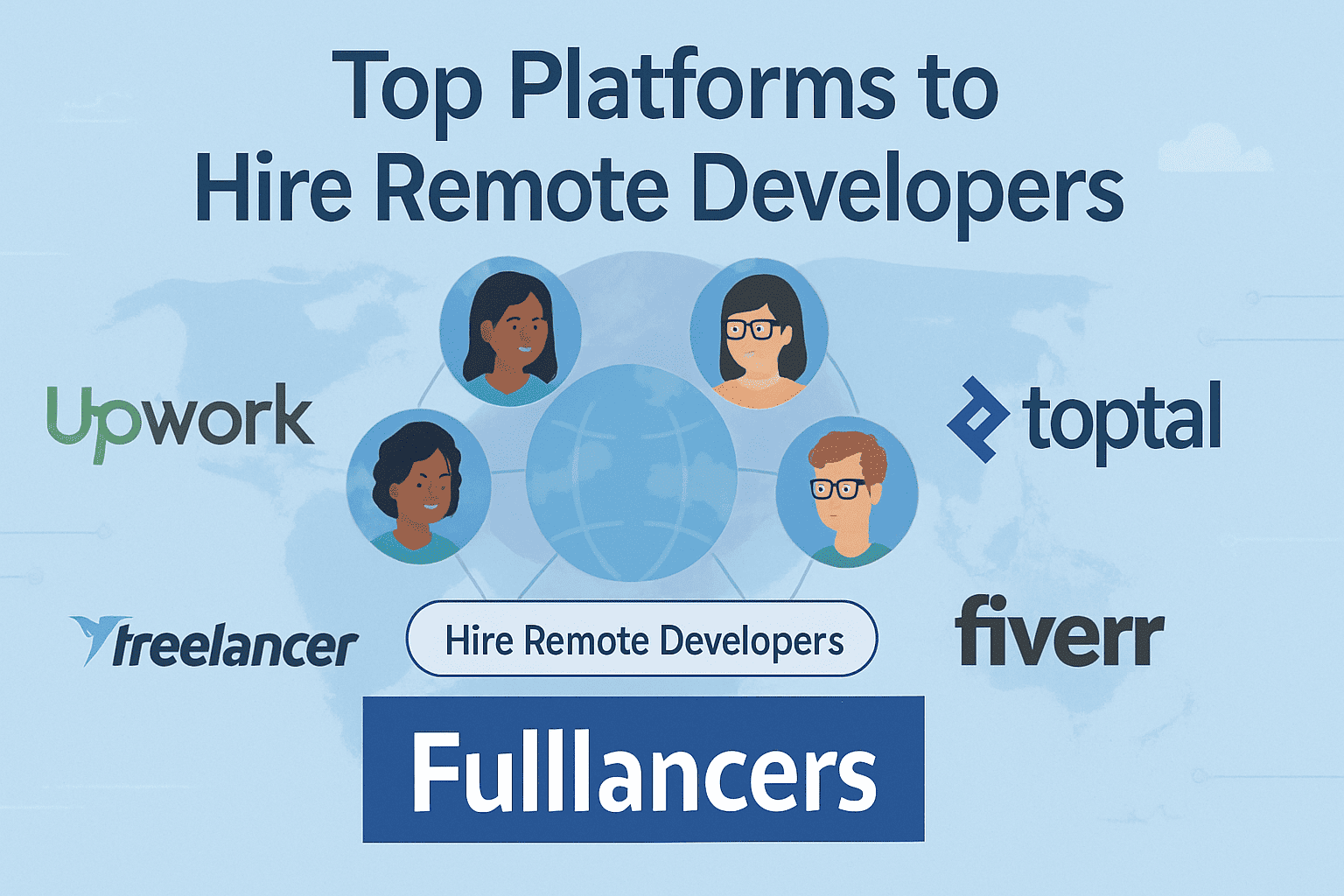How to Effectively Train Your Virtual Assistant for Long-Term Success

Hiring a virtual assistant (VA) is a game-changer for entrepreneurs, startups, and growing businesses. However, success doesn’t come just from hiring the right person; it comes from training them effectively. Knowing how to train your virtual assistant for long-term success ensures that you’re not just delegating tasks but building a reliable system that can scale with your business.
In this guide, we’ll walk you through every step of virtual assistant training, from onboarding to performance tracking, to ensure a productive and lasting working relationship.
Why Training Your Virtual Assistant Matters
When you hire a virtual assistant, you're doing more than assigning tasks; you’re laying the groundwork for a collaborative, long-term partnership that supports your business goals. Here’s why training your VA is critical to long-term success:
1. Higher Productivity
Proper training enables your virtual assistant to work more efficiently by clearly understanding your expectations, workflows, and preferred tools. When your VA knows exactly how to complete tasks and access the necessary resources, they can operate with confidence and speed, ultimately saving you time and increasing the overall productivity of your business operations.
2. Better Task Accuracy
Training minimizes errors by providing your virtual assistant with the specific knowledge they need to complete tasks correctly the first time. Without proper guidance, even highly capable VAs may misinterpret instructions or overlook details that are important to your brand or industry. A well-trained VA understands not just what to do, but how to do it in a way that aligns with your standards and preferences.
3. Lower Turnover
One of the most common reasons VAs become disengaged or leave a role is due to a lack of clarity and support. Investing time in training demonstrates to your assistant that you value their contributions and are committed to helping them succeed. This fosters trust and loyalty, which in turn leads to higher job satisfaction and significantly reduces the likelihood of turnover in the long run.
4. Long-Term Delegation Success
When your virtual assistant is properly trained, you can delegate with confidence, knowing that tasks will be handled consistently and efficiently without constant oversight. This allows you to scale your delegation over time, from simple tasks to more complex responsibilities, creating a sustainable system that frees up your time and supports long-term growth.
5. Strong Communication Workflows
Training helps establish clear and effective communication channels between you and your VA from the very beginning. By setting clear expectations around communication, tools, and progress reporting, you establish a strong foundation for ongoing collaboration, minimize misunderstandings, and foster a positive and transparent working relationship.
Step-by-Step Guide to Training Your Virtual Assistant for Long-Term Success
1. Define the Role Clearly
- Before your virtual assistant ever logs in for their first day, you should invest the time to create an exhaustive role blueprint that spells out the precise scope of work, everything from recurring administrative duties to any project-based responsibilities, so they know exactly where their authority starts and ends.
- Document a comprehensive list of daily and weekly tasks in a single, easy-to-reference location, leaving no ambiguity about priorities, frequency, or desired outcomes, which prevents wasted time and eliminates the need for repeated clarifications.
- Specify every tool, such as project management software, communication platforms, cloud drives, and specialty apps, that the VA will use. Include access credentials, permission levels, and brief usage guidelines so they can ramp up without encountering technical roadblocks.
- Finally, translate your business goals into clear performance indicators (KPIs), articulating how success will be measured, so the assistant understands what “excellent” looks like from day one.
2. Set Up an Effective Onboarding Process
- Kick off the partnership with a friendly yet structured introductory video call that serves to break the ice, communicate your leadership style, and provide the strategic context behind the work they’ll perform, thereby fostering an immediate sense of inclusion and purpose.
- Offer a concise business overview that touches on core values, brand voice, target audience, and long-term objectives, so the VA understands how their tasks contribute to the bigger picture, which, in turn, boosts their intrinsic motivation.
- Guide the assistant through a hands-on walk-through of every mission-critical tool and piece of software, sharing screens, demonstrating workflows, and highlighting common pitfalls, so they feel empowered rather than overwhelmed.
- Establish a crystal-clear communication and reporting structure by setting expectations around preferred channels, response-time norms, and the cadence of status updates, which dramatically reduces future misunderstandings.
3. Create Standard Operating Procedures (SOPs)
- Transform every repeatable task into a step-by-step Standard Operating Procedure, writing the instructions at a granularity that even a brand-new hire could follow, thereby guaranteeing consistency and safeguarding institutional knowledge.
- Embed annotated screenshots or concise video tutorials, recorded to illustrate each step visually, because a ten-second clip can often eliminate paragraphs of text and prevent user error.
- Include troubleshooting tips that cover the most common edge cases, error messages, or client objections the VA might encounter, so they can solve problems autonomously instead of waiting for your guidance.
- Clarify preferred tools and document formats at every stage, whether that means drafting social posts in Google Docs, updating metrics, or tracking tasks so outputs always arrive in the right channel and layout.
4. Start Small and Scale Gradually
- Begin the engagement by assigning low-risk, recurring tasks, such as basic inbox triage or routine social-media scheduling, allowing the VA to build confidence and you to benchmark their reliability without jeopardizing mission-critical operations.
- As their proficiency becomes evident through on-time delivery and low error rates, progressively delegate more complex or strategically significant responsibilities, like client follow-ups, light bookkeeping, or analytics reporting, so their workload grows in tandem with their demonstrated competence.
5. Use Visual and Interactive Training Tools
- Supplement written procedures with narrated screen-recordings that demonstrate real-world execution of tasks, because seeing the mouse movements and hearing your thought process accelerates comprehension far more than text alone.
- Schedule live, interactive walkthroughs, where the VA performs a task. At the same time, you observe and coach in real-time, cementing muscle memory and clarifying nuances that might not be apparent in static documentation.
- Provide real-time feedback via synchronous channels, so small corrections happen immediately, preventing minor misunderstandings from snowballing into major errors.
6. Maintain Regular Check-Ins and Feedback Loops
- If the workload is fast-paced, hold brief daily stand-ups to surface blockers early and keep momentum high without turning updates into a time sink.
- Conduct in-depth weekly reviews that examine completed tasks, measure them against KPIs, and set priorities for the coming week, reinforcing accountability while giving the VA a forum to ask questions or propose optimizations.
- Conduct higher-level monthly strategy sessions to align on evolving business goals, upcoming campaigns, or skill development needs, ensuring the assistant’s efforts stay in lockstep with your broader objectives.
- Deliver feedback that is balanced, candid about areas for improvement, yet generous in recognizing achievements, so the VA feels both guided and valued, which encourages sustained performance gains.
7. Encourage Ownership and Initiative
- Invite your VA to audit existing workflows and suggest refinements, signaling that you trust their judgment and are open to process innovation that could save time or money.
- Give them access to dashboards or trackers where they can monitor their key metrics, nurturing a self-managing mindset that frees you from micromanagement while sharpening their accountability.
- Empower them to make day-to-day decisions within clearly defined parameters, such as approving refunds up to a certain amount or scheduling posts without prior sign-off, so they become proactive problem solvers rather than passive task takers.
8. Track Progress and Measure Success
- Monitor task-completion rates to ensure assignments are finished on schedule, comparing actual delivery times to baseline expectations to identify efficiency gains or bottlenecks.
- Review accuracy or error rates, whether in data entry, customer responses, or content formatting, to maintain quality control and spotlight areas for retraining before issues escalate.
- Analyze time-on-task metrics to identify productivity trends, reward improvements, and reallocate duties if certain tasks consistently exceed reasonable durations.
- Assess communication quality by reviewing message clarity, tone, and responsiveness, because effective remote collaboration hinges as much on interpersonal skill as on technical ability.
- Observe levels of proactiveness, noting instances where the VA anticipates needs or flags potential problems early, since initiative is a leading indicator of long-term strategic value
9. Invest in Ongoing Training and Development
- Encourage your VA to pursue relevant courses and certifications, such as advanced Excel, copyediting, or CRM administration, and reimburse or subsidize the costs, demonstrating your commitment to their professional growth.
- Provide training on new tools or upgraded software whenever your tech stack evolves, so the assistant remains fully equipped to operate at peak efficiency without experiencing a learning curve slump.
- Offer opportunities for cross-functional exposure, allowing the VA to assist in departments like marketing or customer success, which not only broadens their skill set but also creates valuable operational redundancy for your business.
Common Mistakes to Avoid
- Failing to establish clear expectations at the outset leads to chronic confusion, redundant questions, and wasted hours for both you and the VA, ultimately sabotaging productivity and morale.
- Succumbing to micromanagement, hovering over every keystroke, and demanding constant confirmation strips the VA of autonomy, slows execution to a crawl, and erodes the very efficiency gains you hired them to deliver.
- Neglecting to provide prompt, constructive feedback leaves the assistant uncertain about their performance and unable to correct course, which can compound minor issues into serious shortcomings over time.
- Overlooking the importance of thorough documentation forces the VA to rely on memory or guesswork, resulting in inconsistent outputs that vary in quality and create an avoidable drag on operational consistency.
- Focusing too narrowly on technical competence and overlooking the interpersonal chemistry and shared values that underpin any successful remote collaboration, ignoring soft skills such as communication style and cultural fit, is a mistake.
Final Thoughts
Training your virtual assistant is not a one-time event; it’s a continuous process. The better you train and invest in your VA, the greater your business's capacity for growth. From onboarding and task management to ongoing feedback and empowerment, every step plays a role in ensuring your VA becomes a valuable long-term asset. Maximize your efficiency! Learn 10 essential tasks entrepreneurs should outsource to a virtual assistant to streamline operations and focus on core growth activities.
Hire Python Developers
Hire Python developers who can turn your vision into reality. Hire the most skillfull python developers from Fulllancers.



